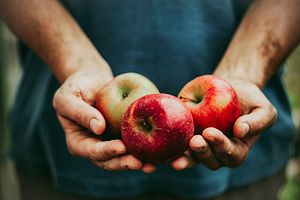In the Western world, January is not often associated with the harvest, but this is the time of the year when many Indian states and the country of Nepal celebrate their respective harvest festivals. Throughout India, but especially in Telangana and Andhra Pradesh, Makar Sankranti is celebrated on January 14 or 15. In the state of Tamil Nadu, the festival is known as Pongal. Meanwhile in Assam, it is called Bihu.
The Punjabi version of the festival, Lohri, celebrated in both India and Pakistan, has some interesting legends associated with it. In a story recounted by Scroll, “people gather to sing a popular Punjabi folk song, Sundar munderiye, about a certain Dullah Bhatti who helped to rescue poor Punjabi women from the rather cruel zamindar, landlord.”
Bhatti is said to have resisted the centralizing tax and agrarian reforms of the Mughal Emperor Akbar. The Mughals at this time were trying to implement a revenue system, known as the zabt, which made “Mughal officers responsible for both the assessment and collection of revenue,” much to the displeasure of the local nobility, like Bhatti. He was eventually executed, saying “no honourable son of Punjab will ever sell the soil of Punjab.”
The moral of this tale is instructive: rural India will always do things its own way in the end, and changes must be incremental and in alignment with the wishes of India’s numerous and powerful rural interests. India has always been a place where centralization and standardization took root with great difficulty. This is a fact that any reformist government in India must keep in mind when planning policy.
The harvest festivals of January are celebrated in different ways throughout the region, but one common factor is the distribution of sweets. The use of jaggery–a concentrated solid product of cane juice similar to molasses–to sweeten these snacks is particularly ubiquitous all over India. Rice, which is newly harvested around this time, also features prominently.
Why does the subcontinent celebrate its harvest in January? Its interesting climatic patterns actually create the conditions for two growing seasons, one reason why the region has had enough food to support such a large population. The entire year can be spent growing crops because of the monsoon season, which generally lasts for a couple of months around June and July.
Crops sown during the monsoon are known as kharif crops and require a lot of water. These crops include rice, daal (lentils), beans, sorghum, and millet. The harvesting of the kharif crops is the cause of this January’s harvest festivals. Around this time, or slightly before, in October, during the dry season that lasts until the next monsoon, the winter crop cycle begins when rabi crops are sown. These crops include wheat, barley, mustard, and peas. Thus, the region can expect a diverse variety of crops during two different harvests each year.
As a result, there’s much to be celebrated.

































